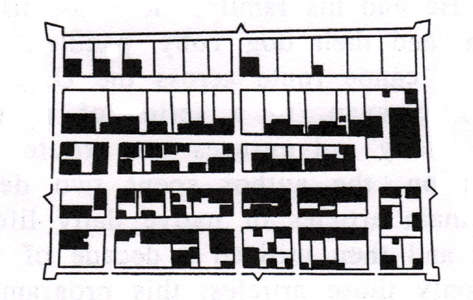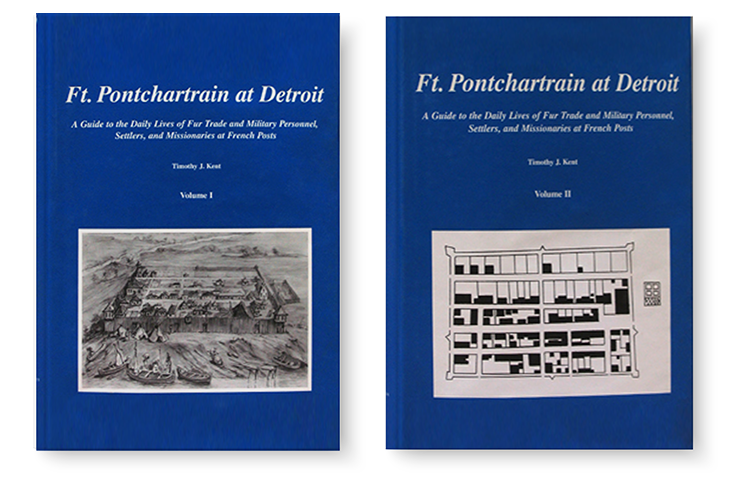Ft. Pontchartrain at Detroit
A Guide to the Daily Lives of Fur Trade and Military Personnel, Settlers, and Missionaries at French Posts
By
Timothy J. Kent
ISBN: 0-9657230-2-X
Use drop down menu to determine price after shipping according to your location
Recipient of the Prestigious
State History Award
from the Historical Society of Michigan
 When Cadillac departed from Montreal in June in 1701, he led an expedition of 100 voyageurs and soldiers in 25 birchbark canoes. Sent by King Louis XIV, he had been ordered to establish Ft. Pontchartrain at Detroit as the new center of fur trade and military power in the interior regions. The large canoes had been packed with everything that would be needed to paddle for seven weeks to the site, construct the fort and its buildings, and fully equip a state-of-the-art trading post, military installation, and settlement. Before departure, the King’s Storekeeper had meticulously recorded every single item of equipment, provisions, and trade goods, along with the transport containers. That 18-page cargo manifest, discovered, and translated by the author, provides a minutely detailed insider’s view of life at a French trading post and military fort three centuries ago. Additional information has been gleaned from inventories of private households at the fort, the complete inventory of Cadillac’s possessions there in 1711, many lists of trade goods that were transported to the post, and hundreds of other period documents.
When Cadillac departed from Montreal in June in 1701, he led an expedition of 100 voyageurs and soldiers in 25 birchbark canoes. Sent by King Louis XIV, he had been ordered to establish Ft. Pontchartrain at Detroit as the new center of fur trade and military power in the interior regions. The large canoes had been packed with everything that would be needed to paddle for seven weeks to the site, construct the fort and its buildings, and fully equip a state-of-the-art trading post, military installation, and settlement. Before departure, the King’s Storekeeper had meticulously recorded every single item of equipment, provisions, and trade goods, along with the transport containers. That 18-page cargo manifest, discovered, and translated by the author, provides a minutely detailed insider’s view of life at a French trading post and military fort three centuries ago. Additional information has been gleaned from inventories of private households at the fort, the complete inventory of Cadillac’s possessions there in 1711, many lists of trade goods that were transported to the post, and hundreds of other period documents.
The items listed in these records, as well as those excavated at numerous French and native sites of the period, have been divided into the various activities which took place in daily life at such a fort. An extensive chapter is devoted to each activity area: canoe transportation; provisions, cooking, and eating; hunting and warfare, trapping, and fishing; buildings, hardware, and furnishings; vestments and activities of the priest; woodworking, metalworking, and masonryworking; farming and gardening; clothing; sewing, laundry, and cleaning; grooming and medical treatments; recreation; and trade and commerce. The individual articles are fully described and illustrated, and their usage is explained, incorporating numerous references from firsthand accounts by French outfitters, traders, military officers, and missionaries, many of which have never been published. Since considerable numbers of French items were also incorporated into native life, this material pertains to the lifestyles of the native populations as well.
This two volume set is a unique and entertaining reference work for avocational and professional historians, archaeologists, curators, re-enactors, and enthusiasts of the fur trade era, early military life, and native lifeways. Containing 1,154 pages in a large 8.5×11 inch format, the two hardcover volumes are profusely illustrated with over 600 drawings and photographs. This work clearly and vividly reveals the complete anatomy of an interior post and settlement during the French era.

